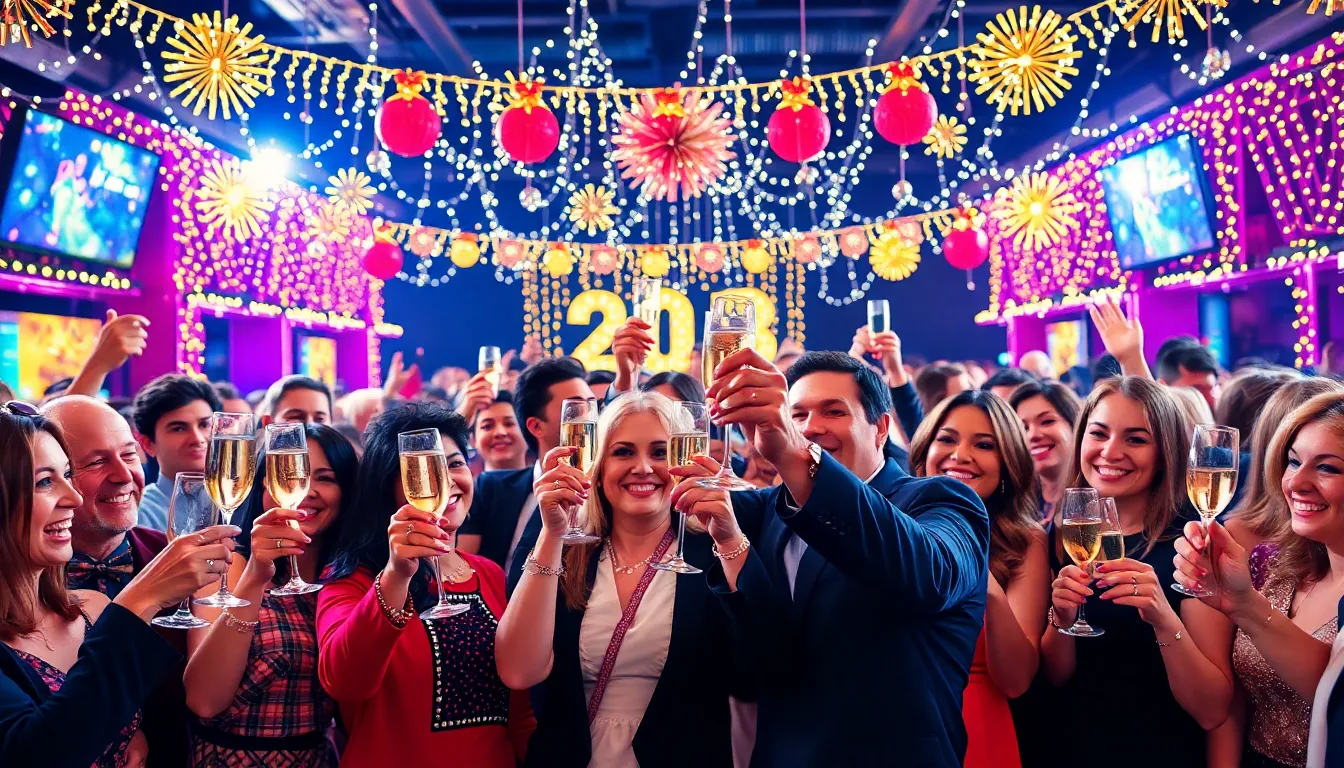As the year winds down and holiday lights twinkle, one question looms larger than a New Year’s resolution: what day is New Year’s Eve? It’s that magical night when everyone suddenly transforms into party animals, ready to bid farewell to the past and welcome the future with open arms and maybe a bit too much champagne.
Table of Contents
ToggleWhat Day Is New Years Eve?
New Year’s Eve occurs on December 31. As the final day of the calendar year, it leads right into New Year’s Day, celebrated on January 1. Many people engage in various activities to mark the transition. Festivities include countdowns to midnight, fireworks displays, and gatherings with friends and family.
The date is significant across cultures. In parts of the world, it represents a time of reflection and renewal. Celebrations might vary from quiet family dinners to extravagant parties. Some people participate in customs like making resolutions or sharing moments of gratitude.
Cities often host large public events. For example, Times Square in New York City attracts thousands, all eager to witness the famous ball drop. Other locations might feature concerts or unique local traditions that highlight regional customs.
New Year’s Eve represents anticipation. People commemorate not just the end of a year, but also the hope and excitement for what’s to come. This occasion encourages individuals to celebrate achievements and set new goals for the next year.
Though December 31 is the primary date recognized, the way people celebrate truly varies. Communities adapt their traditions to fit their cultures, making each celebration unique.
History of New Years Eve

New Year’s Eve features rich history and diverse customs that span various cultures. The festivities symbolize a global embrace of renewal and reflection.
Cultural Celebrations
Many cultures observe unique traditions during New Year’s Eve. For example, in Spain, people consume twelve grapes at midnight, symbolizing good luck for each month ahead. In Japan, people participate in Joya no Kane, ringing bells 108 times to cleanse sins. Communities in Brazil celebrate with vibrant beach parties, wearing white for peace. These diverse activities highlight the universal desire for hope and prosperity in the new year.
Historical Significance
Historically, New Year’s Eve can be traced back to ancient civilizations. The Babylonians celebrated the new year around March 20 during the vernal equinox, marking a season of rebirth. The Julian calendar later shifted the celebration to January 1 in 45 BCE, a practice embraced by the Roman Empire. Many Christian traditions adopted the date, associating it with spiritual renewal. These historical changes reflect evolving cultural priorities and the quest for a fresh start.
How New Years Eve Is Celebrated Today
New Year’s Eve is a vibrant occasion filled with diverse celebrations. People across the world embrace various customs to welcome the new year.
Common Traditions
Countdowns to midnight mark the climax of the evening in many cultures. Celebratory toasts with champagne signify hope for the upcoming year. Festive gatherings often include family and friends sharing food and laughter. People frequently light fireworks, creating bright displays that illuminate the night sky. Writing resolutions symbolizes intentions for personal growth. Dancing is a staple, with music bringing joy to the celebrations, making the atmosphere more lively.
Global Variations
Different countries showcase unique traditions on New Year’s Eve. In Spain, eating twelve grapes at midnight is believed to bring good luck. Japan observes Joya no Kane, ringing bells to cleanse the sins of the past year. Brazil hosts beach parties where participants wear white to symbolize peace and renewal. Countries like Scotland celebrate Hogmanay, featuring torchlight processions and songs. In the Philippines, loud noises and fireworks ward off evil spirits, reflecting their rich cultural heritage. Variations highlight the universal desire for renewal and joy during this global celebration.
Importance of New Years Eve
New Year’s Eve serves as an essential cultural milestone worldwide. Celebrations not only mark the end of a calendar year but also symbolize impending new beginnings. Individuals often use this occasion for reflection, assessing their past year’s experiences and lessons learned. Family and friends come together, reinforcing social bonds through shared festivities.
Countdowns to midnight create a collective anticipation, bridging the past and future. Fireworks light up the sky, providing a visual spectacle that enhances the celebratory atmosphere. Many communities host public events, such as the famous ball drop in Times Square, New York City, drawing crowds and fostering a sense of unity.
Traditions vary widely, making each culture’s celebration unique. In Spain, for instance, people eat twelve grapes at midnight for good luck, while in Japan, the Joya no Kane bell-ringing ceremony signifies the cleansing of sins. Brazil’s beach parties feature participants dressed in white to symbolize peace.
Making resolutions is a common practice, establishing intentions for personal growth in the new year. Acknowledging achievements and setting new goals fosters a proactive mindset. New Year’s Eve ultimately embodies hope, renewal, and the pursuit of prosperity.
Communities adapt their customs to reflect cultural identities, enhancing the significance of this event. The blending of personal and communal celebrations illustrates the universal desire for new beginnings. As festivities unfold, the spirit of anticipation and optimism permeates the atmosphere, highlighting the importance of New Year’s Eve across the globe.
New Year’s Eve stands as a vibrant celebration of hope and renewal. As December 31 approaches, individuals around the world prepare to bid farewell to the past year while welcoming new possibilities. The diverse customs and traditions associated with this night reflect a universal desire for connection and joy.
Whether through fireworks, countdowns, or intimate gatherings, the spirit of New Year’s Eve encourages people to come together. This festive occasion not only marks the end of a year but also invites reflection and the setting of new intentions. As the clock strikes midnight, the excitement of a fresh start resonates with everyone, making this celebration truly special.





